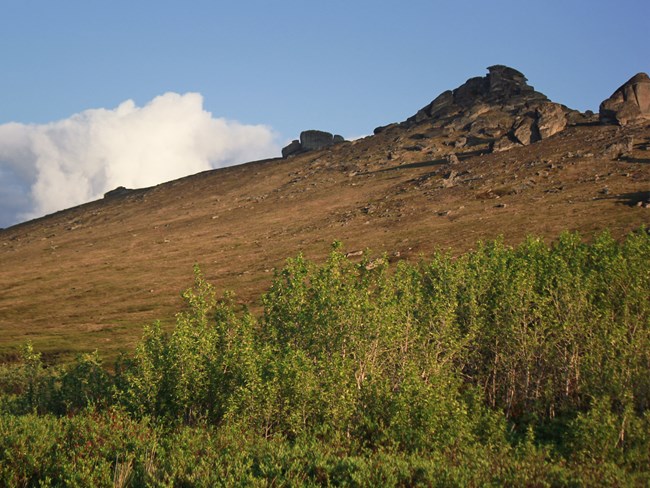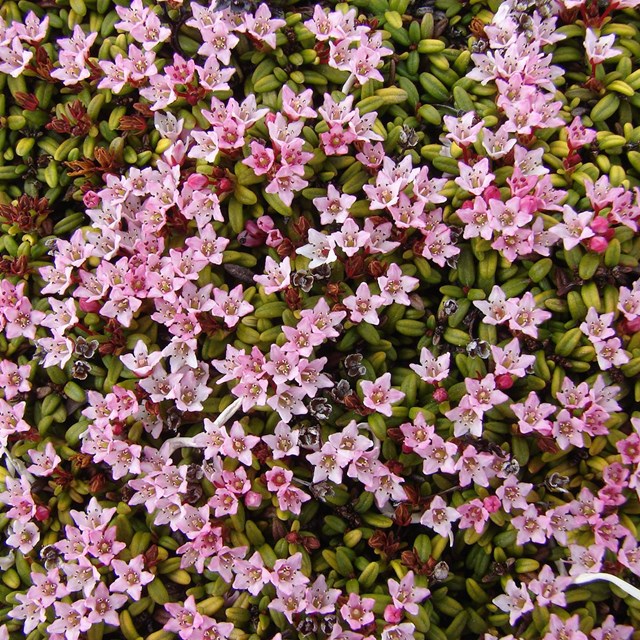
NPS Photo Few trees manage to survive the cold, windy, and often dark tundra environment. Cottonwoods are an exception to the norm. They can be found sparsely scattered across much of Bering Land Bridge National Preserve. While several species of cottonwoods thrive further south, only a few have what it takes to endure an arctic environment. By large, the most common tree found in the preserve is a type of cottonwood called balsam poplar (Populus balsamifera). The balsam poplar is the northernmost hardwood species in America. Unlike the cottonwoods found further south that can grow up to 100 feet, the balsam popular is a short tree. It has dark green leaves turn gold before shedding in fall, and the tree sports pointed, resinous buds in the winter and early spring. The balsam poplar plays a critical role in the riparian ecosystem by providing shelter and food for a variety of animals. An abundance of insects make homes out of the riverbed habitat of the cottonwood, and in turn, these insects provide a food source for fish, birds, and other animals. The cottonwood is part of the willow family, and, like many species in the family, the balsam poplar is known for its medicinal uses. Certain parts of the tree, especially the bud and bark, have historically been used to make skin salves, teas, and other herbal medicines. more plants at bering land bridge
|
Last updated: December 10, 2025






